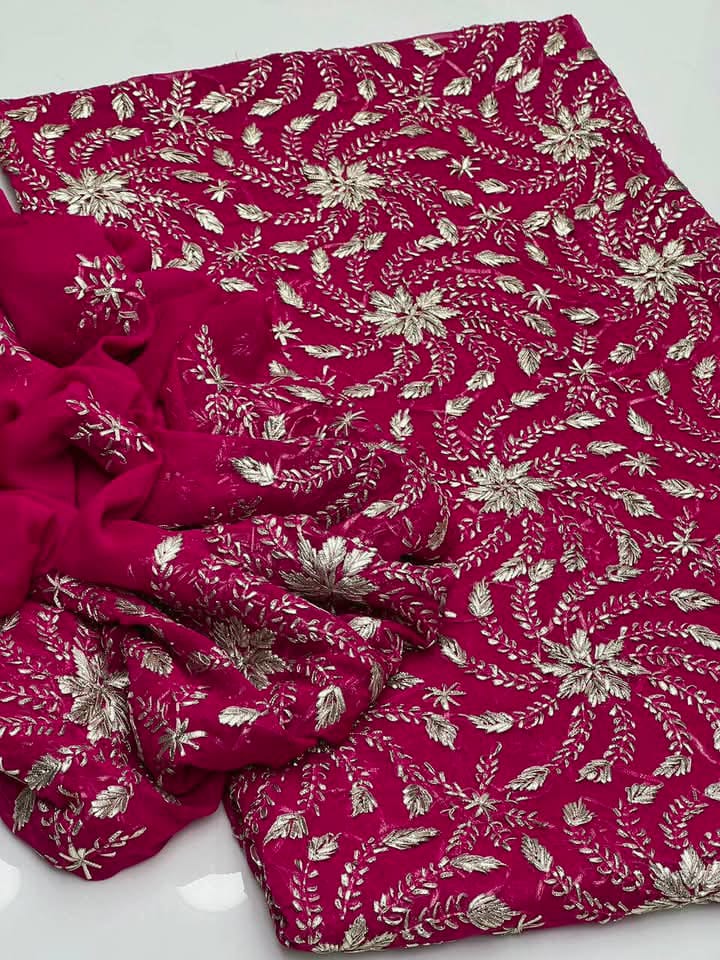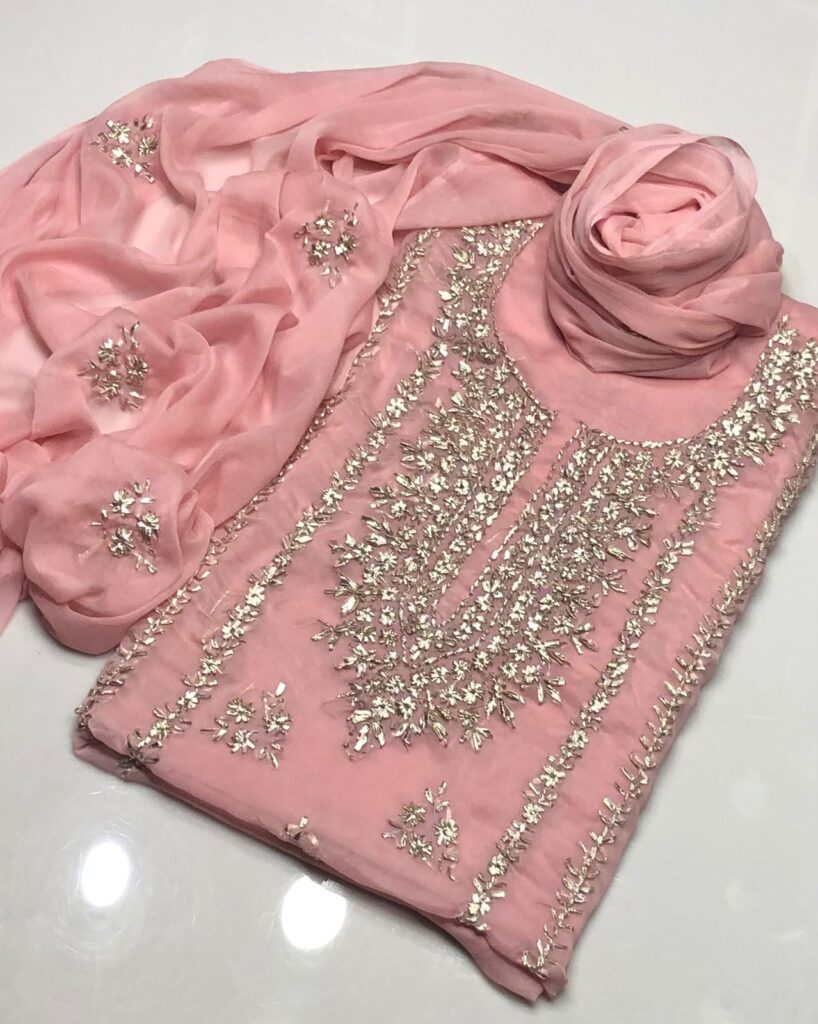Gotta (also spelled gota) work is a traditional form of embroidery, primarily used in South Asian clothing, particularly for festive and bridal wear. Gotta work involves the application of metallic ribbons, lace, or applique work on fabrics like chiffon, silk, georgette, and velvet. The process is intricate and requires skilled craftsmanship.
Steps in Producing Gotta Work:
- Material Selection:
- The base fabric (chiffon, silk, georgette, or velvet) is chosen.
- The gotta (thin metallic ribbon or lace) is made from gold, silver, or colored metallic fibers.
- Design Drafting:
- The embroidery design is drawn on tracing paper.
- The design is transferred onto the fabric using chalk powder, tracing wheel, or stencil techniques.
- Cutting & Placement:
- The gotta strips are cut into desired shapes (floral, geometric, paisley, etc.).
- These cut pieces are placed on the fabric according to the design.
- Attachment Techniques:
- Hand-sewing: Traditional artisans hand-stitch the gotta using fine threads.
- Machine Embroidery: Modern methods use machines for faster production.
- Zari Work: Sometimes gotta is combined with zari embroidery for a more elaborate look.
- Additional Embellishments:
- Beads, sequins, stones, and mirror work can be added to enhance the look.
- Finishing:
- Excess threads are trimmed, and the embroidery is checked for consistency.
- The final fabric is ironed and sometimes stiffened to maintain its structure.
Uses of Gotta Work:
- Bridal & Festive Wear: Lehengas, sarees, shalwar kameez, dupattas.
- Home Décor: Cushion covers, wall hangings.
- Accessories: Clutches, juttis (traditional shoes).




